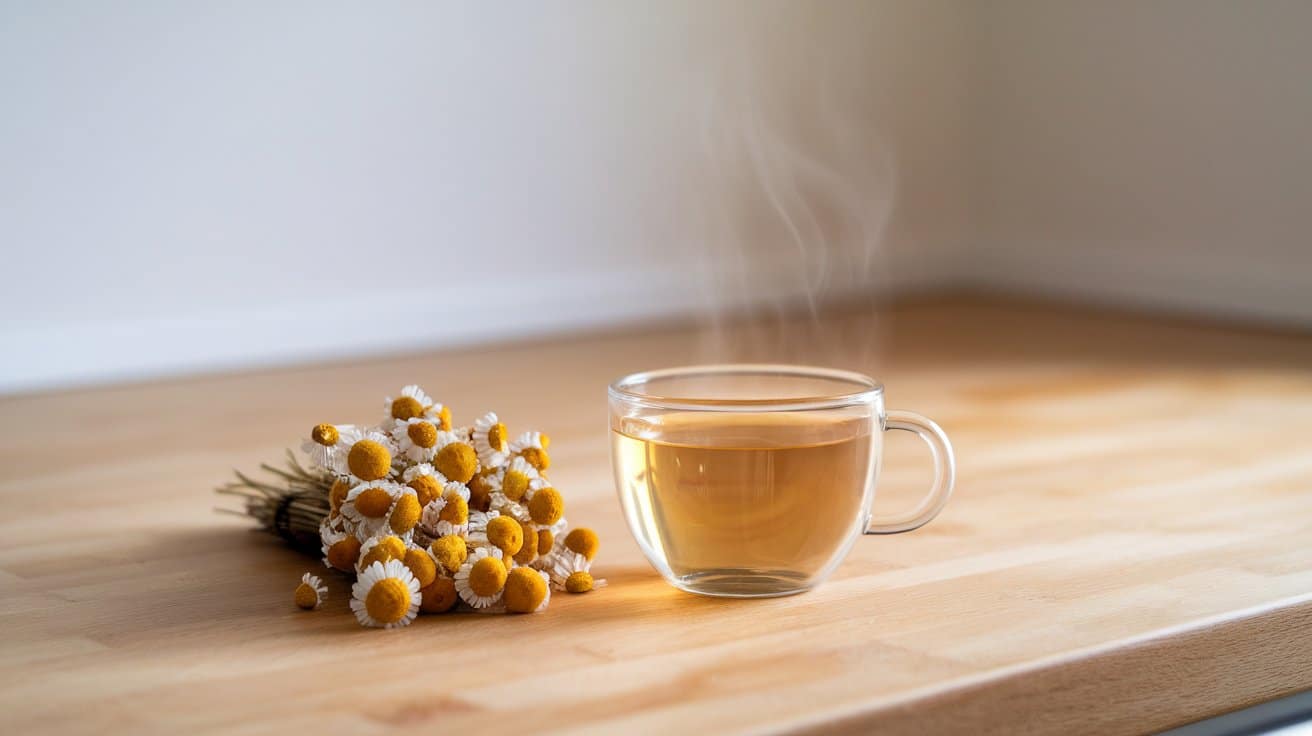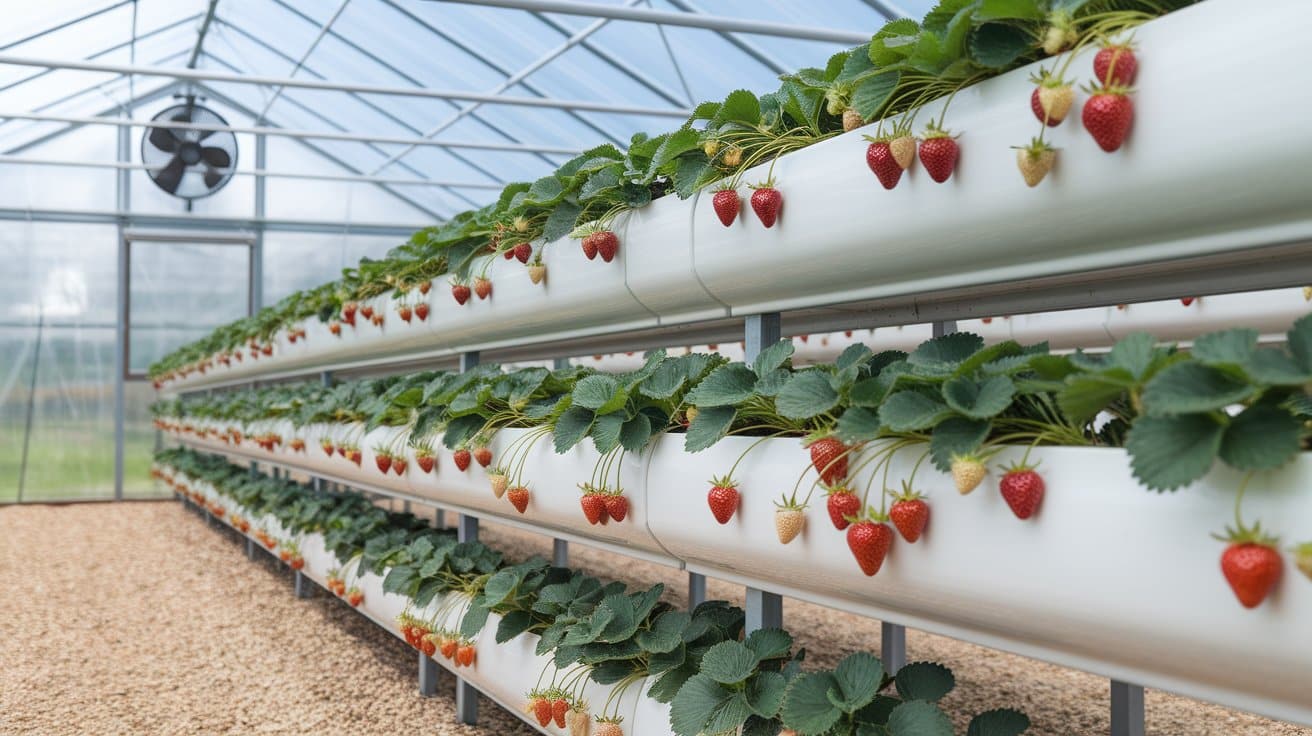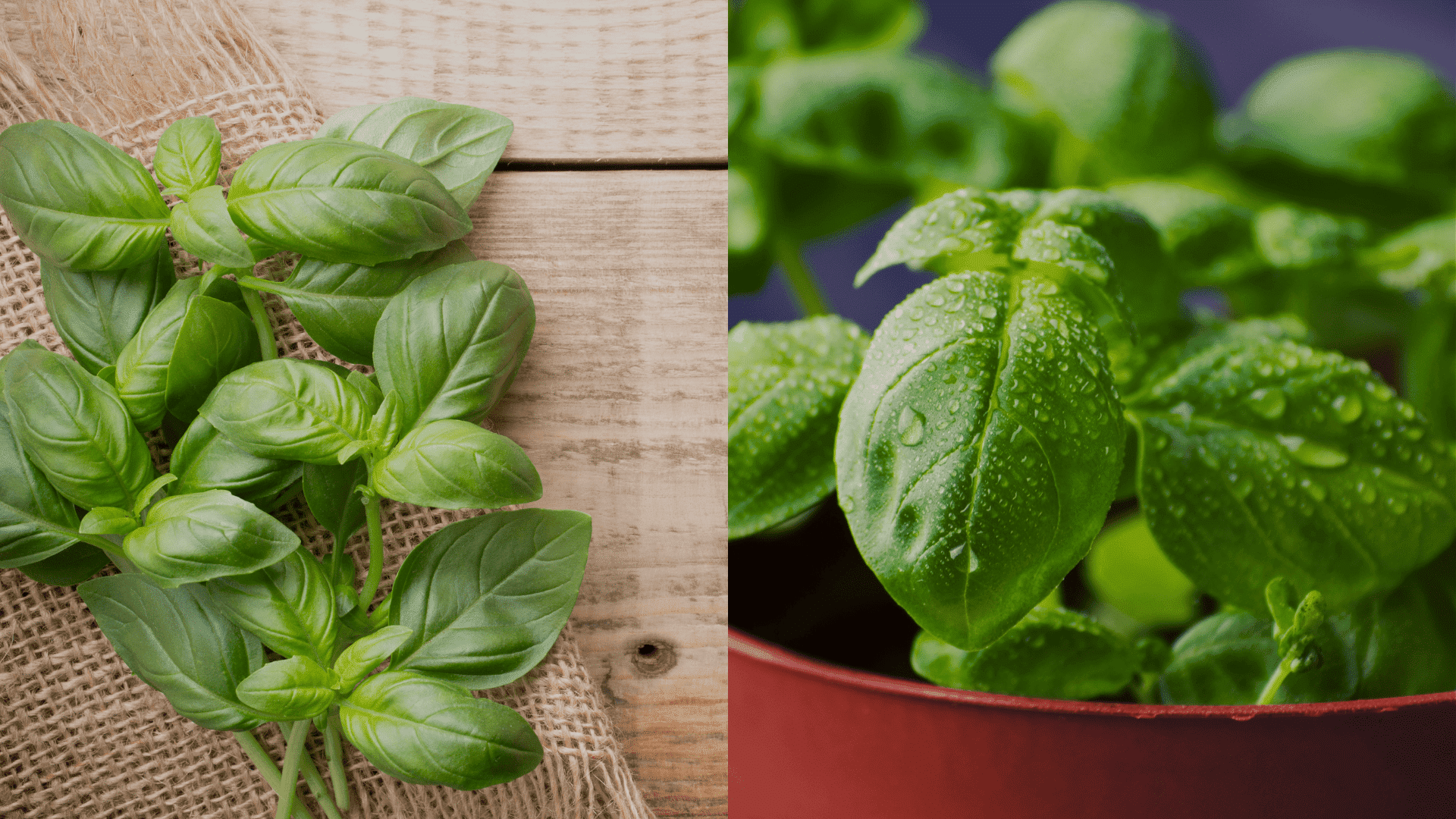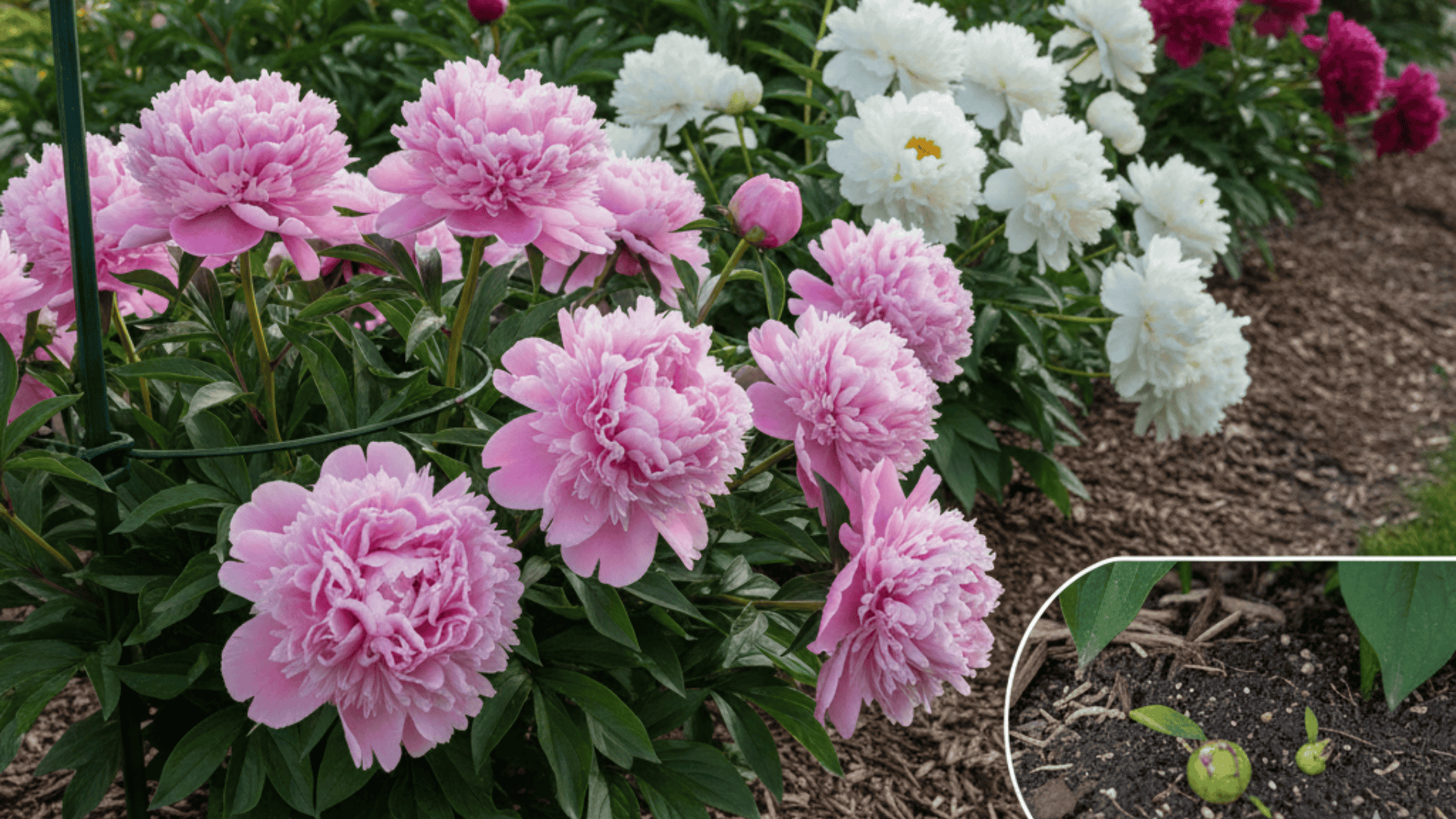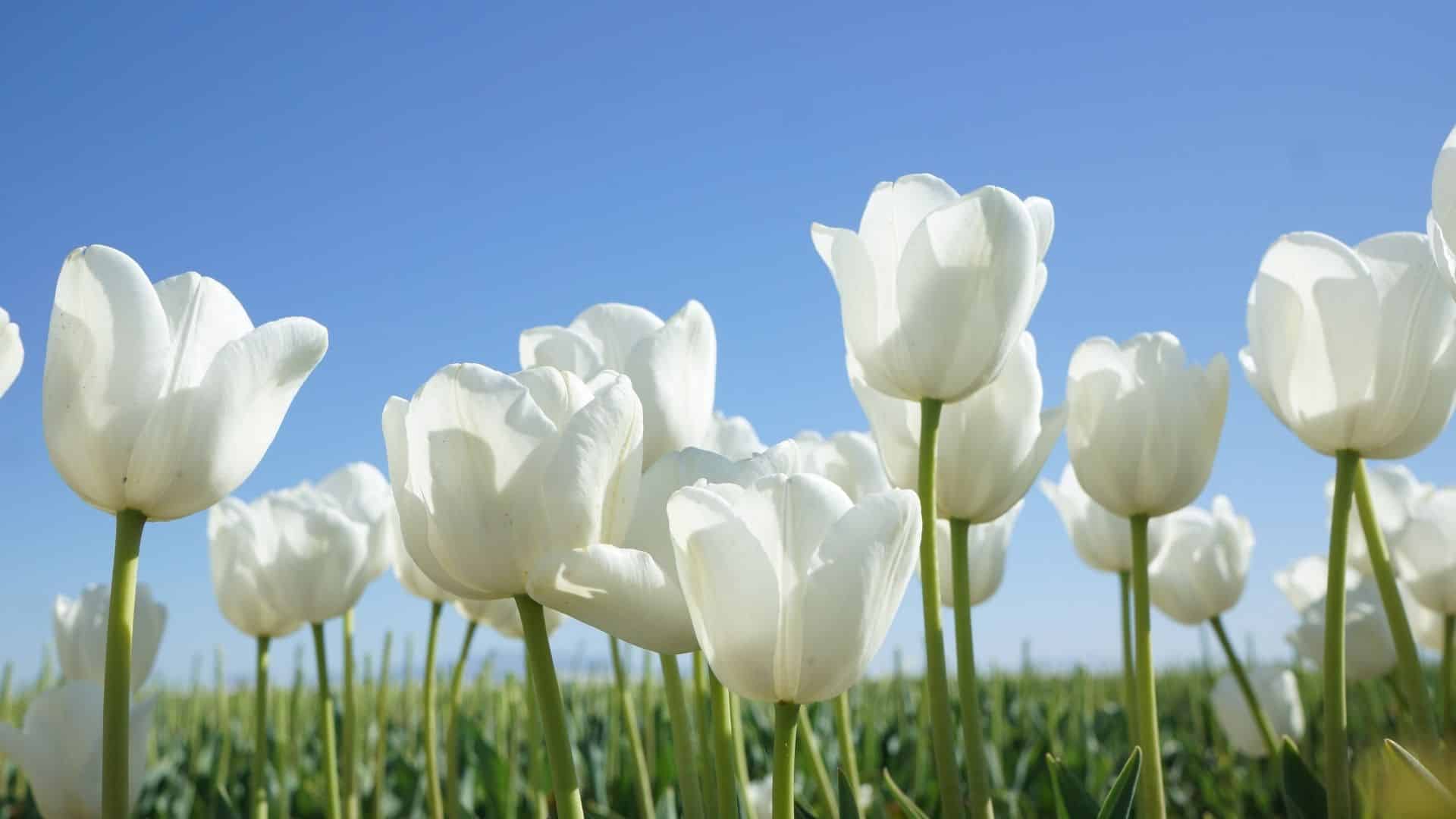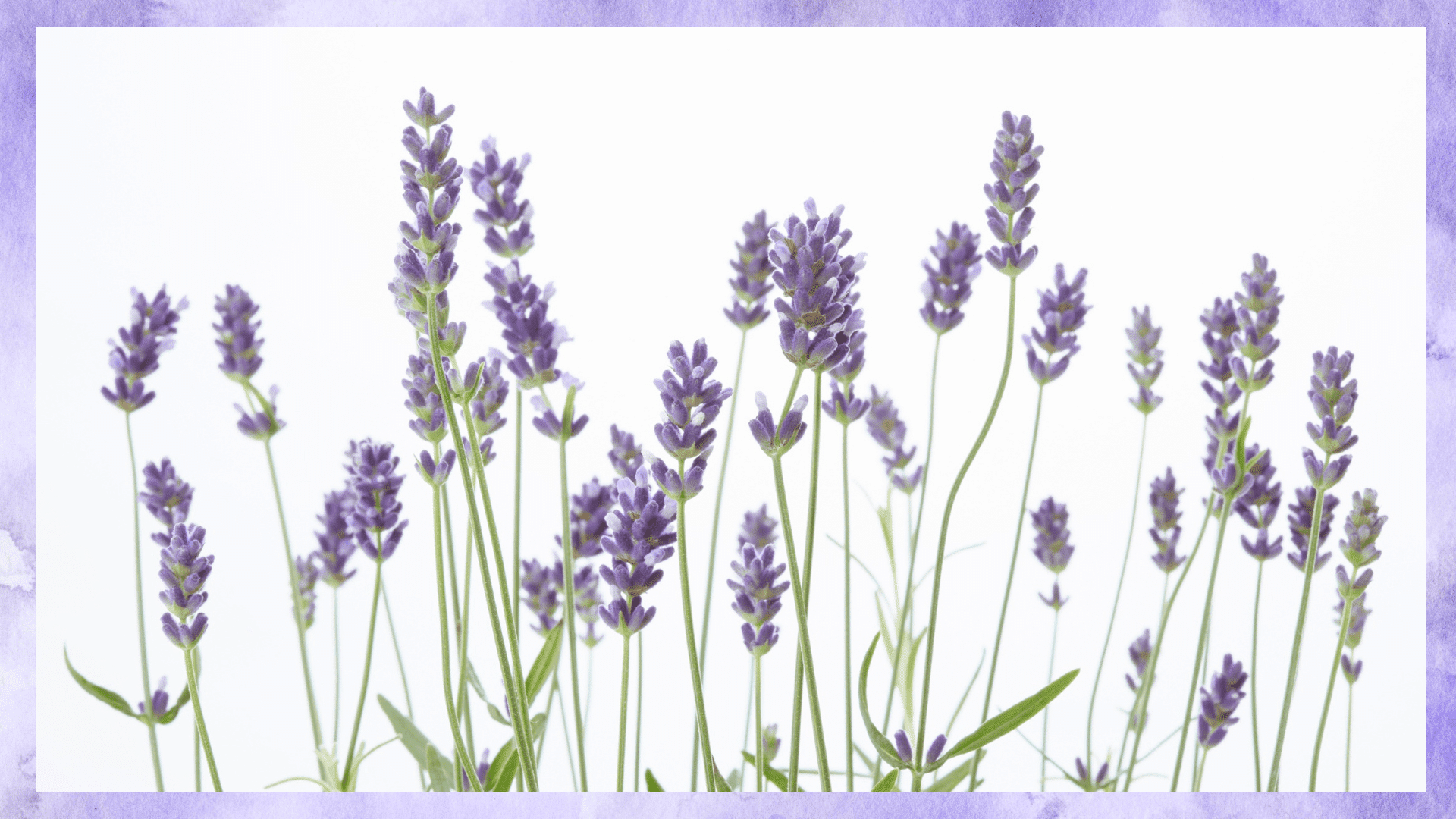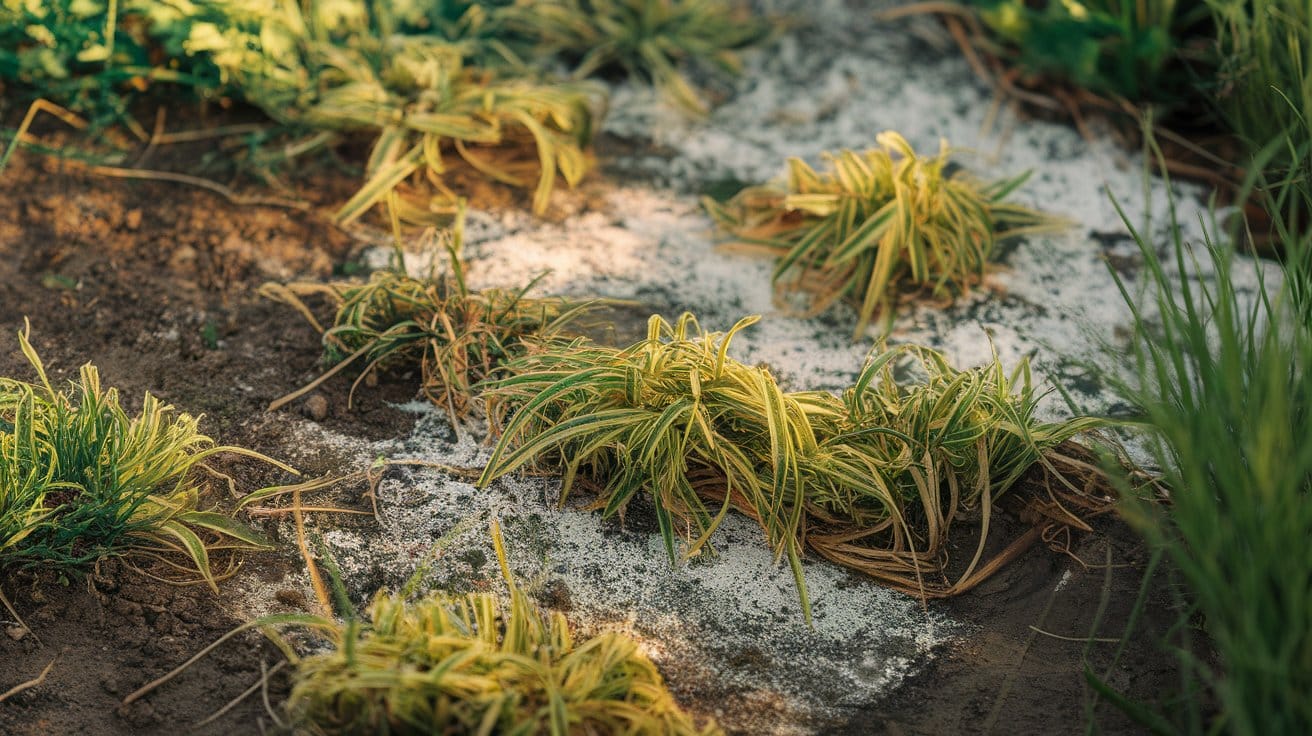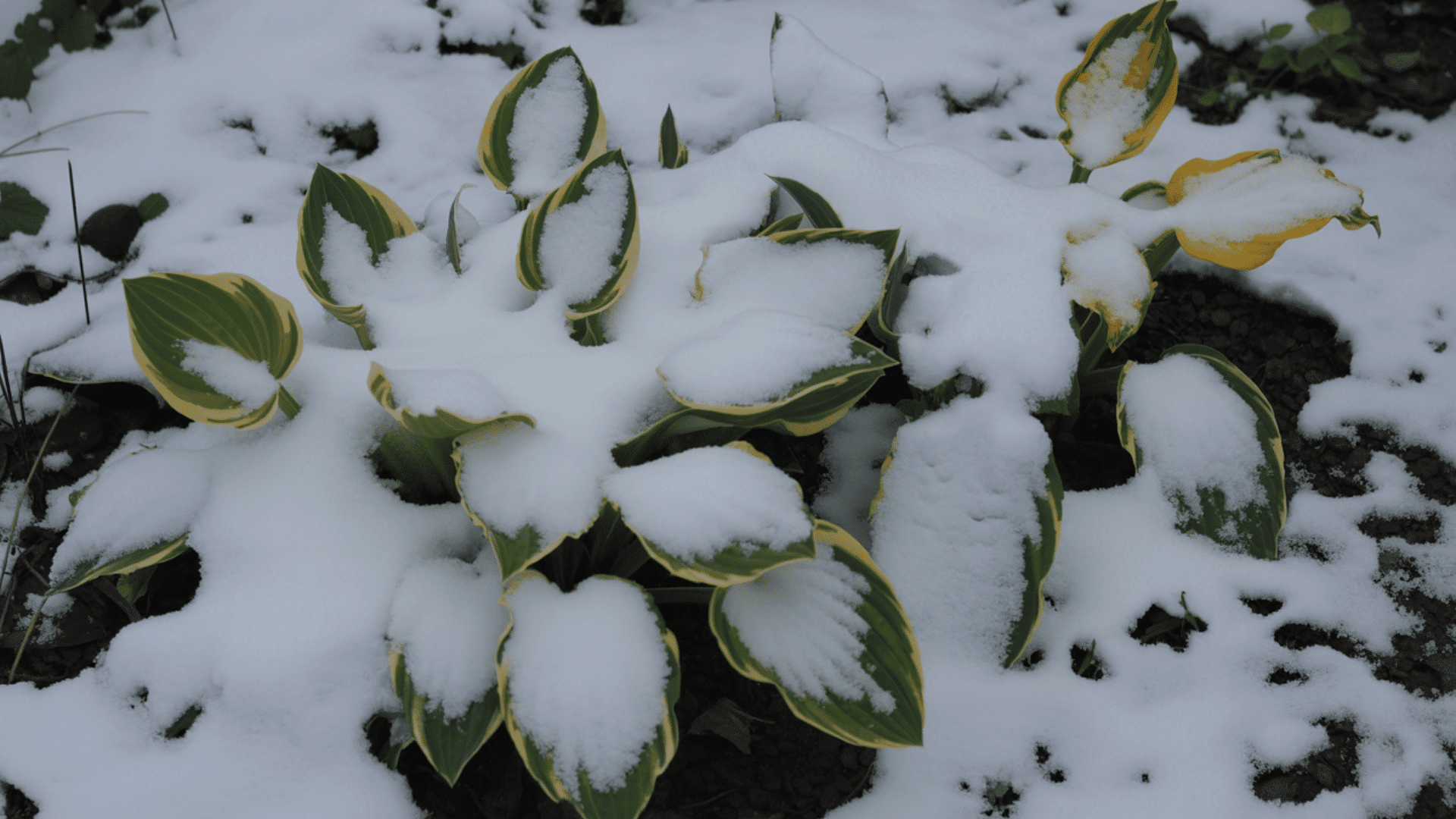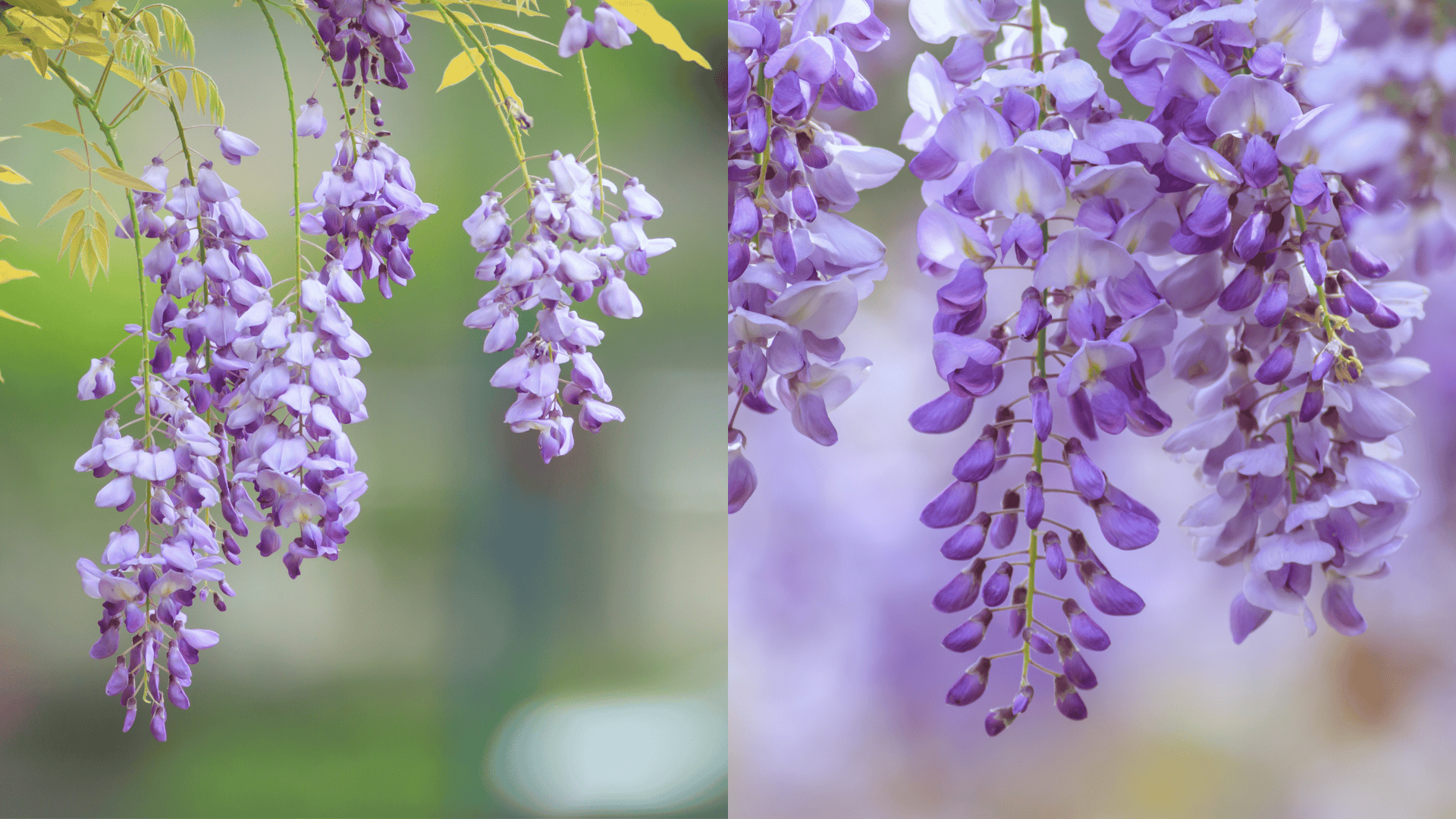Fresh chamomile flowers hold the secret to one of nature’s most soothing teas.
Chamomile has been loved for centuries as nature’s gentle healer. People drink chamomile tea to relax, ease stomach troubles, and sleep better.
But fresh chamomile flowers don’t last long. Learning how to dry chamomile for tea makes a significant difference.
When you use a DIY drying method for chamomile, you preserve all its natural goodness and calming qualities.
This simple approach lets you enjoy that sweet, apple-like flavor for months instead of just a few days
Here, you will learn when to harvest chamomile, various drying techniques, and proper storage methods. Ready to make tea that tastes great all year long?
Why You Need to Dry Chamomile for Tea?
Drying chamomile turns fragile blooms into a shelf-stable tea ingredient that keeps its soothing benefits for months.
Fresh flowers wilt quickly, with petals browning and losing their aroma, but drying extends their life for 6–12 months, so you can enjoy tea year-round.
It also preserves the calming oils and flavonoids that make chamomile effective, while maintaining its sweet, apple-like scent.
Benefits of using Dried Chamomile:
- Brew herbal tea for relaxation and better sleep
- Make infused oils or salves for skincare
- Add to bath soaks for stress relief
- Use in potpourri or sachets for fragrance
- Create homemade gifts like tea blends or bath products
Methods to Dry Chamomile Flowers
There are several simple DIY methods for drying chamomile flowers for tea, each offering its own advantages and ideal timing.
The key is to remove moisture while preserving the oils and flavor intact. Select the method that best suits your setup and timeline.
1. Air Drying
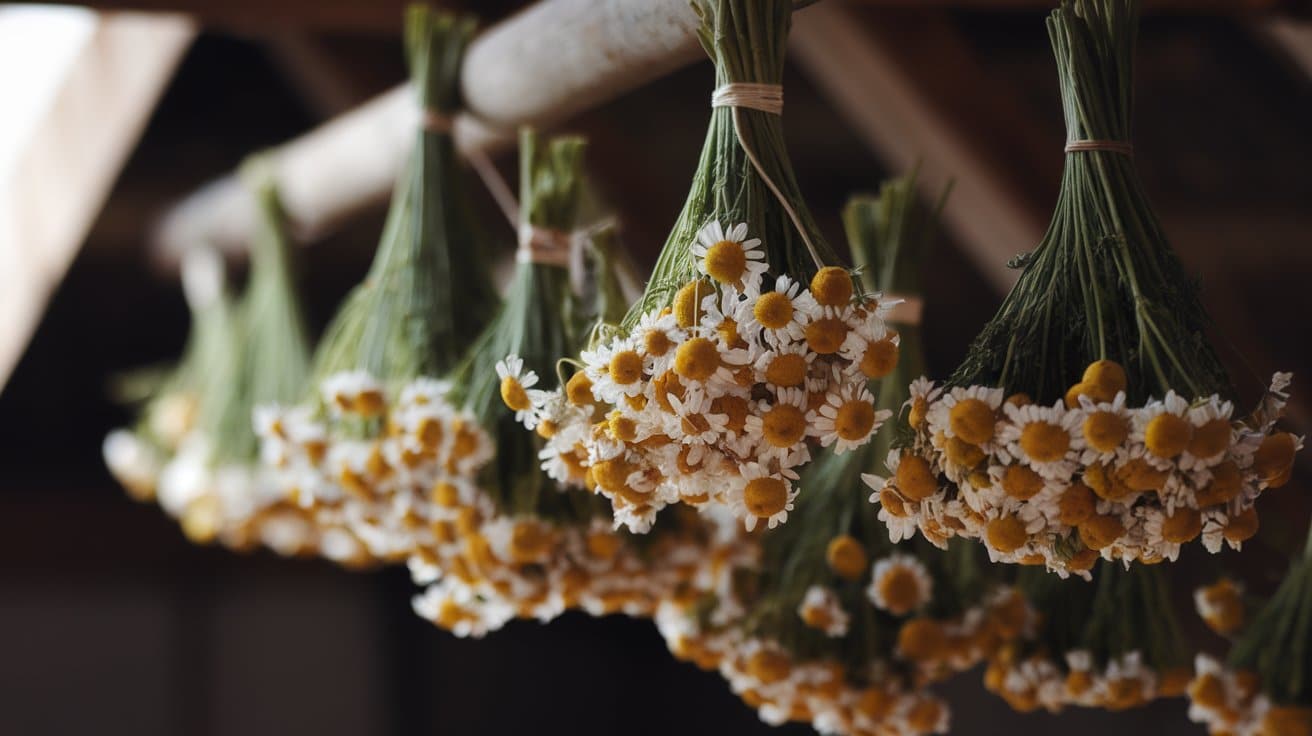
Air drying is the most traditional and gentle way to dry chamomile, helping retain both color and flavor.
Gather small bunches of stems about an inch thick and tie them with string or a loose rubber band.
Hang them upside down in a dark, dry, and airy place such as a closet or covered porch. Avoid basements or areas with poor airflow.
After 1–2 weeks, the flowers should feel crisp, petals crumble easily, and stems snap cleanly, perfect for tea storage.
Pro Tip: Keep away from direct sunlight to preserve color and ensure good airflow to prevent mold. Check for any brown or moldy flowers and remove them immediately.
2. Dehydrator Drying
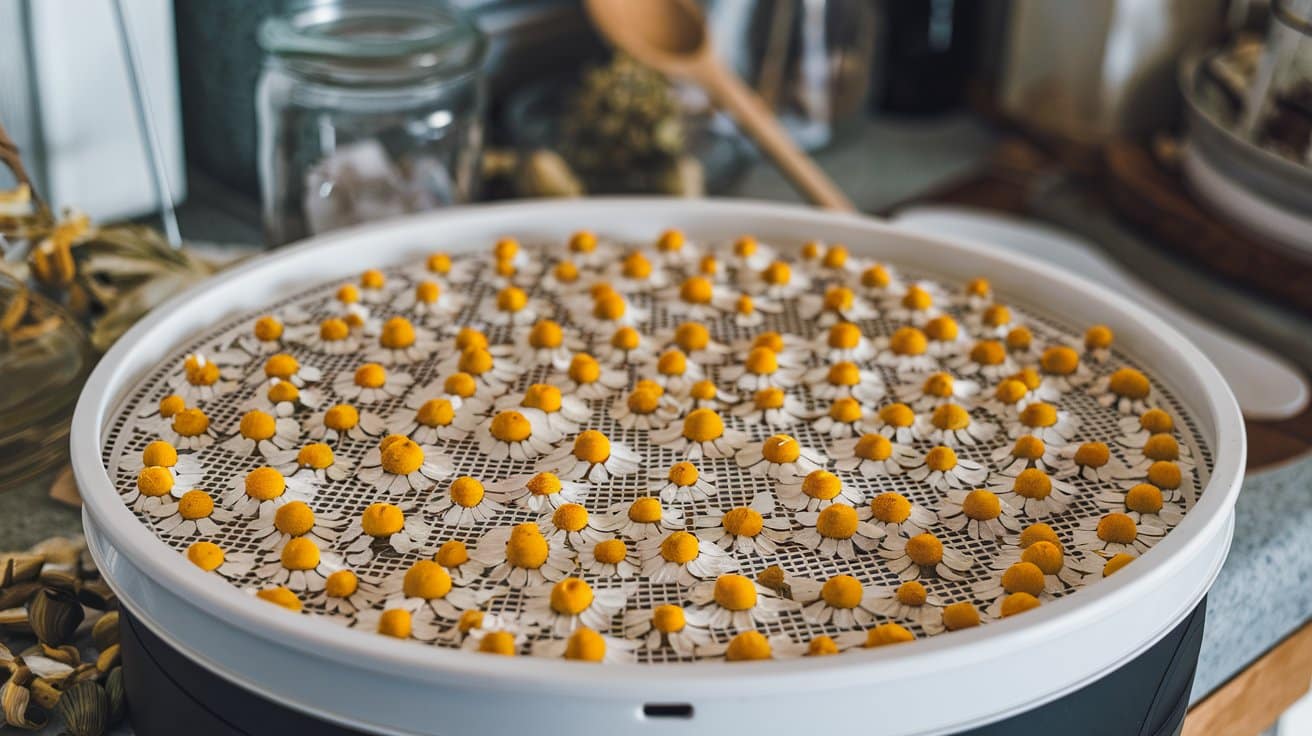
Dehydrator drying is the quickest and most controlled method, ideal for humid areas.
Spread the flowers evenly on the dehydrator trays without overlapping, trimming most stems to allow for better air circulation.
Set the temperature between 95°F and 115°F (35–46°C) to preserve the natural oils that give chamomile its soothing qualities.
Rotate trays every few hours for even drying, and start checking after 3–4 hours. Once the flowers are crisp and fragrant, let them cool before storing for tea.
Pro Tip: Rotate trays every 2 hours for even drying and don’t overload trays so air can circulate properly. Store immediately after cooling to room temperature.
3. Oven Drying
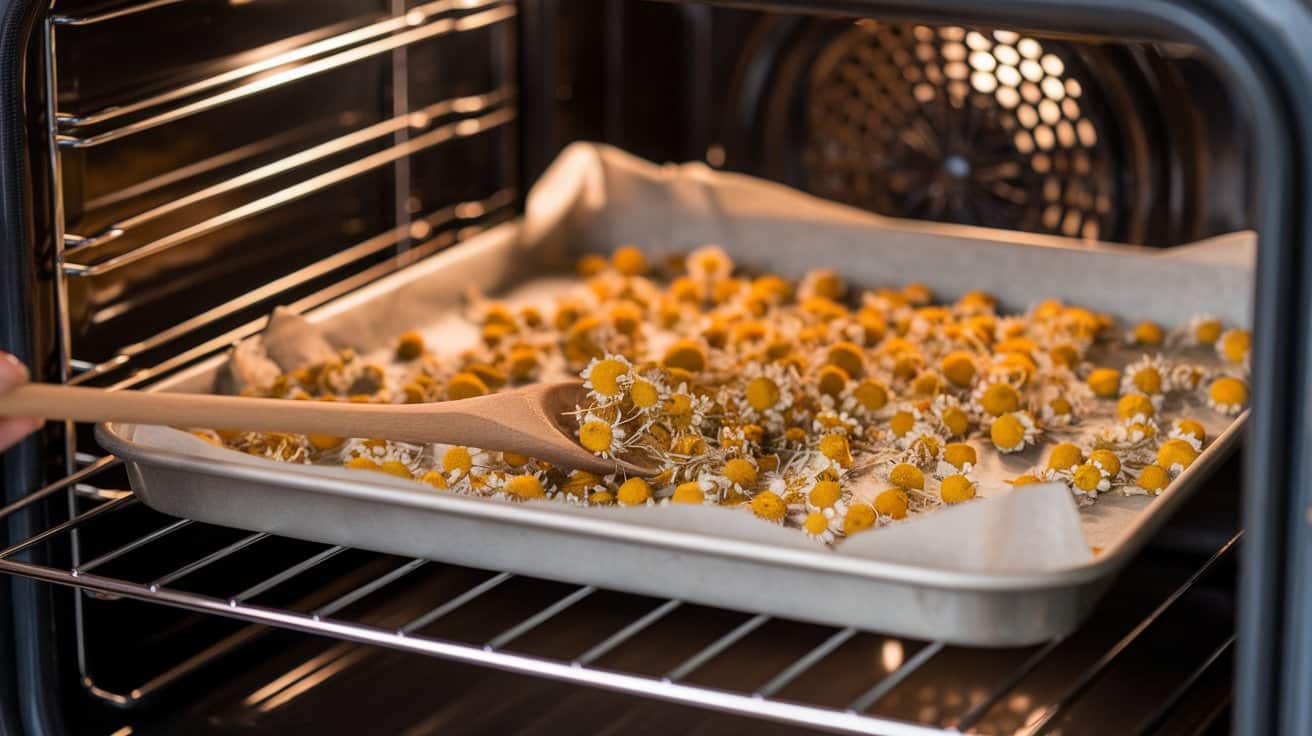
Oven drying works well if you don’t have a dehydrator, but it requires attention to avoid overheating.
Spread flowers in a single layer on a parchment-lined tray, keeping them spaced apart.
Set the oven to its lowest temperature and leave the door slightly open to allow moisture to escape.
Stir the flowers every 30 minutes to prevent scorching. After 2–4 hours, when petals crumble and stems snap, the chamomile is ready to cool and store for later use in tea.
Pro Tip: Use an oven thermometer to monitor actual temperature and turn off the oven periodically if it gets too hot. Watch closely as flowers can go from perfect to burnt quickly.
4. Screen or Paper Towel Drying
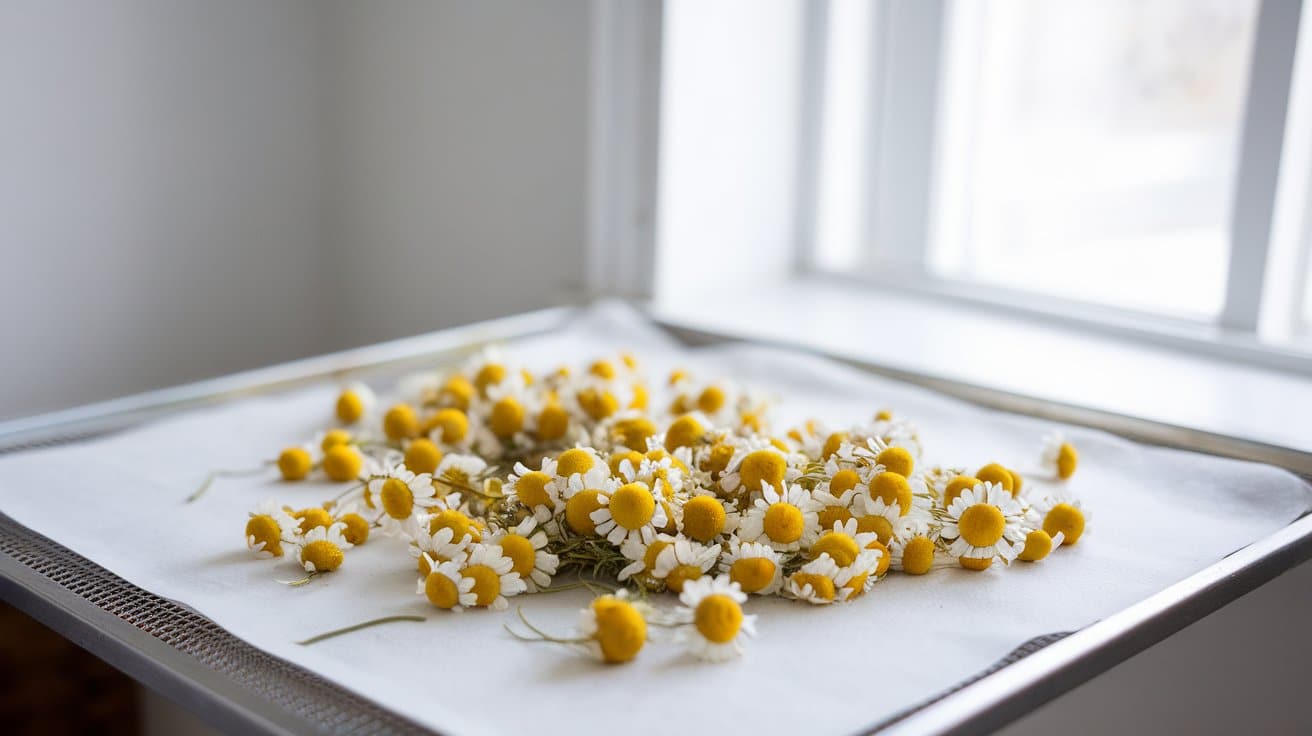
Screen drying is a simple, hands-off method that works best in warm, dry climates.
Spread flowers in a single layer on a clean mesh screen or paper towel and keep them in a shaded, well-ventilated area.
Turn the flowers daily to promote even drying, and replace the paper towels if they become damp.
Avoid humid spaces that could cause mold. After 5–7 days, the flowers should be brittle and aromatic, ready for tea-making or storage.
Pro Tip: Change paper towels daily if using this method and bring indoors if rain or high humidity threatens. Use fans to improve air circulation in still areas.
Tips for Drying Chamomile
These essential tips will help you achieve the best results, regardless of the drying method you choose.
- Never dry flowers in direct sunlight – UV rays break down essential oils and fade the natural white and yellow colors.
- Avoid overcrowding – Flowers need space for airflow to prevent mold and ensure even drying.
- Check regularly – Remove any discolored or moldy heads immediately to prevent spreading to other flowers.
- Ensure complete dryness – Petals should crumble easily, and stems should snap cleanly before storage.
- Store immediately – Move to airtight containers right after drying to prevent moisture reabsorption.
Storing Dried Chamomile
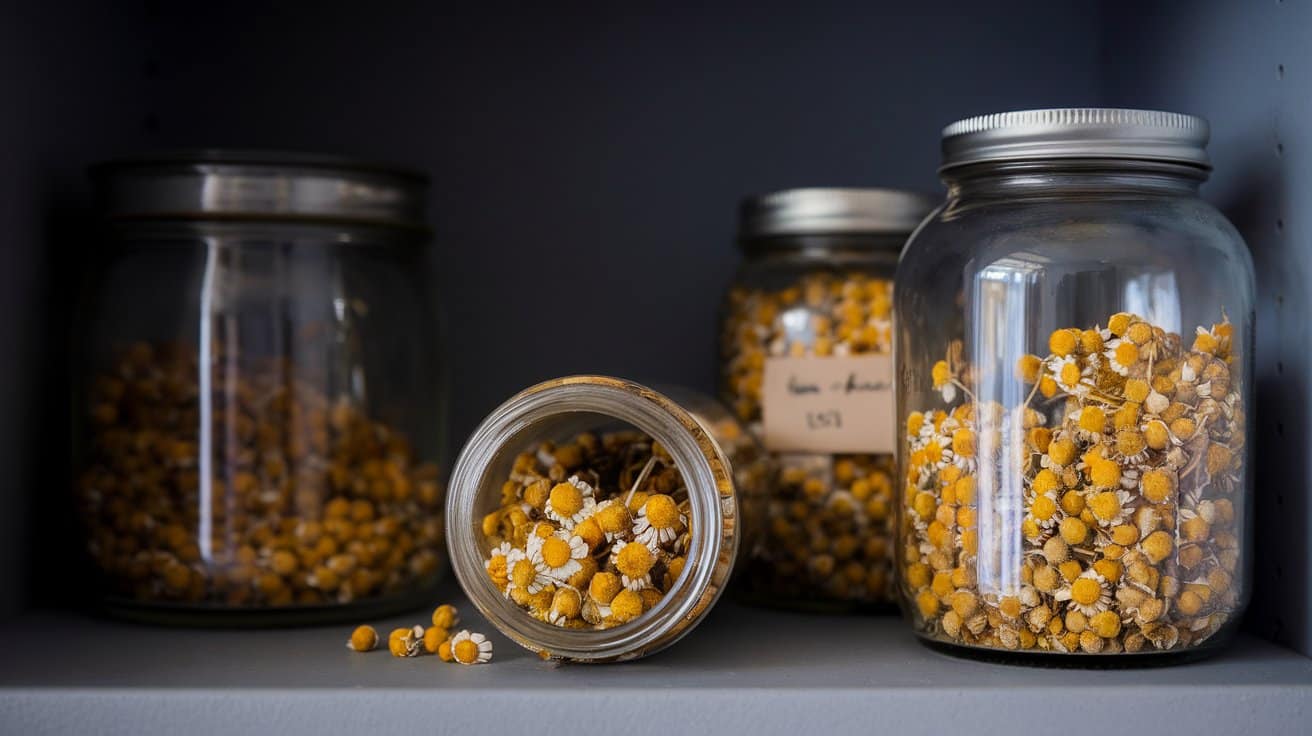
Proper storage keeps dried chamomile fresh, fragrant, and effective for months. The goal is to protect it from air, light, and moisture so it stays perfect for tea.
- Use airtight glass jars: Mason jars work best since they seal tightly and prevent air or moisture from entering.
- Avoid plastic or metal containers: Plastic absorbs chamomile’s oils, and metal can alter the flavor.
- Fill jars carefully: Fill them fully but leave about half an inch of space to avoid crushing petals.
- Store in a cool, dark place: Keep jars in a pantry or cupboard, away from heat, sunlight, or humidity.
- Check for moisture: Avoid damp spots like basements or bathrooms to prevent mold.
- Label and rotate: Mark the harvest or storage date and use older batches first.
- Use within 6 months: Chamomile lasts up to 12 months, but the best flavor and aroma remain for 6.
Conclusion
Drying chamomile properly converts fresh flowers into a tea ingredient that lasts all year. The process is simple once you know the right steps and timing.
The basics remain the same: pick quality flowers, remove all moisture completely, and store them in airtight containers away from light.
Your homemade DIY dried chamomile will taste better than store-bought versions. You control the quality from harvest to cup.
The sweet, apple-like aroma and calming effects stay strong for months when dried and stored correctly.
Ready to start drying your own chamomile? Try a method that fits your setup and let us know your results in the comments below!
Frequently Asked Questions
Can I Dry Chamomile Flowers that Have Already Started to Wilt?
Slightly wilted flowers can still be dried, but avoid any that are brown or slimy. The tea won’t be as potent as fresh-picked flowers, but it’s still usable.
How Much Dried Chamomile Should I Use per Cup of Tea?
Use 1-2 teaspoons of dried chamomile flowers per 8-oz cup of hot water. Steep for 5-7 minutes for best flavor.
Can I Mix Dried Chamomile with Other Herbs?
Yes, chamomile blends well with lavender, mint, lemon balm, and honey. Mix after drying for best results.

